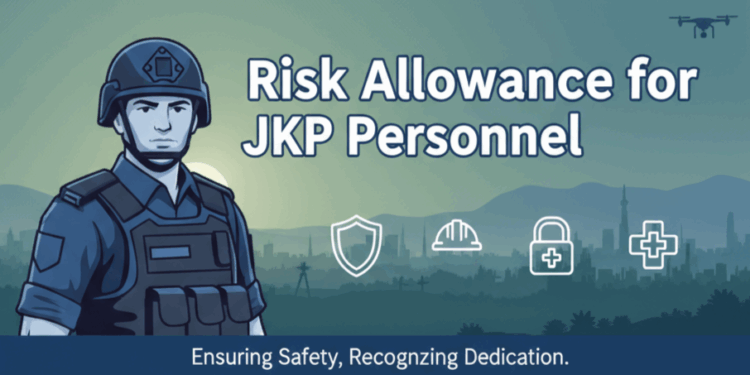“We are not asking for privilege; we are asking for fairness. The risk borne by J&K Police is not less than any other force”
K KOUSHAL
It would not be perhaps wrong to say that the Jammu & Kashmir Police (JKP) deserves immediate parity in risk allowances with Central Armed Police Forces (CAPFs) deployed in the region.
Talking to The Typewriter, a senior police officer, wishing anonymity said that the issue has been raked up due to the martyrdom of several brave personnel in a recent killing in Nowgam.
“The J&K Police has fought the longest and the toughest battle without rotation, without rest, and without relief. We remain permanently deployed on the same soil where the threat originates,” the officer stated, adding that while other central forces receive battalion rotations and transfers out of conflict zones, JKP personnel and their families are permanently exposed.
“Our families live within the conflict, often exposed to the same threats we face on duty. This is a burden of sacrifice no other force stationed here bears in the same way,” he added.
Quoting the official data, senior officer said that since 1990, over 1,700 J&K Police personnel have laid down their lives, a number the officer stressed “aren’t just numbers—these are fathers, mothers, sons, and daughters whose sacrifices have ensured that democracy stands strong.”
The Senior Officer highlighted that the JKP is not merely a supporting force but the primary engine of anti-terror operations, relying heavily on its local roots.
“It is a fact that intelligence gathering in Kashmir depends primarily on local police sources, not external agencies,” the officer asserted. He noted that the majority of successful operations, from neutralizing top commanders to dismantling Over Ground Worker (OGW) networks, “begin with J&K Police intelligence inputs.”
He acknowledged the national consensus that terrorism is at its lowest level in decades, but firmly maintained that “the JKP contribution to this peace is unmatched.”
The risk and hardship allowance for JK Police varies based on location, rank, and specific roles. For certain hazardous duty personnel like the Special Operation Group (SOG) and bomb disposal squad, the hardship allowance was increased by the J-K administration in 2019. Other police personnel are entitled to risk and hardship allowances as part of their salary package, with rates that can be influenced by central government guidelines for central armed police forces (CAPFs).
He said that while a Constable in the JKP receives a risk allowance as low as ₹75 to ₹100 per month, and Deputy Superintendent of Police around ₹250, their CAPF counterparts performing similar duties in the same zone receive significantly higher amounts—for example, a CRPF Constable can draw between ₹10,500 to ₹25,000 per month.
Officer said that when the bullet does not differentiate between uniforms, and the ultimate sacrifice is equal, “it is an injustice that the risk allowance is unequal.”
He added, “We are not asking for privilege; we are asking for fairness. The risk borne by J&K Police is not less than the CRPF, BSF, or any other force—in fact, in many situations, it is greater.”
The officer asserted, “If peace has returned to the valley, it is written with the blood of J&K Police martyrs. We appeal to the Government to kindly bring J&K Police Risk Allowance at par with CAPFs and honour that courage not just with words, but with justice.”

















